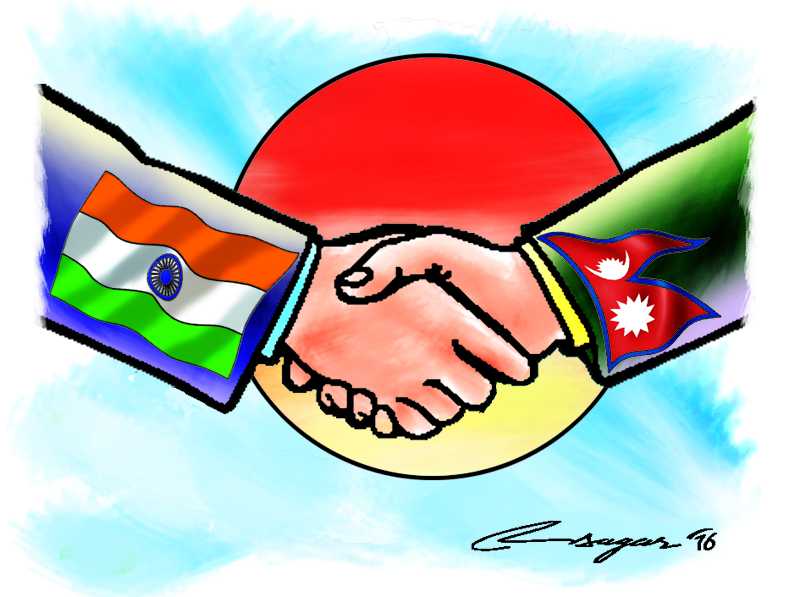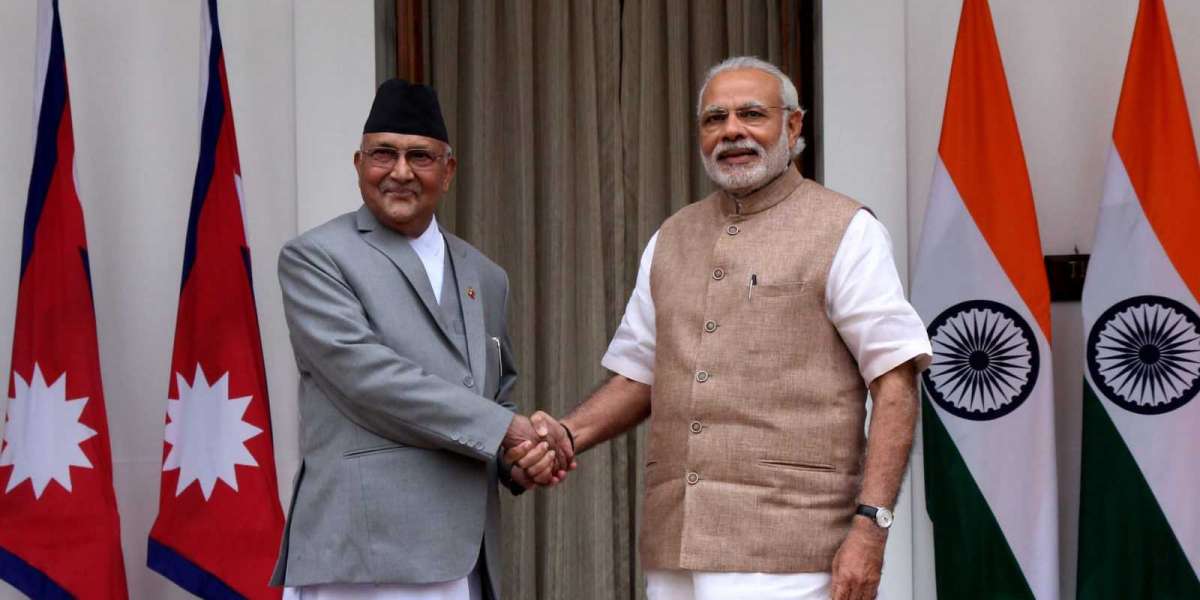India and Nepal, the two south asian countries who share a common boundary and common culture. The relationship between India and Nepal dates back to Vedic Times. The founder of Buddhism, Gautam Buddha was born in Lumbini in Southern Nepal. Ashoka the great, the mighty ruler of the maurya dynasty embraced buddhism and paid a visit to Lumbini in Nepal where he erected several structures. The name of Nepal is also mentioned in the epic Mahabharata. The then Kirata King of Nepal went to take part in the Batte of Kurukshetra. A number of major rivers in India originates from glaciers situated in the Mountains of Nepal.The shared culture and believes between the people of the two countries makes them Friends for Ever.
Nepal was never colonised by the British and India got Independence in the year 15 August, 1947. Since independence India and Nepal shared trade and cutural relations with the signing of 1950 India-Nepal treaty of peace and friendship.Being a landlocked nation,Nepal exports and imports its goods from India. Nepalese military and police officers are trained in India. Indian army has a regiment of Gorkha with a proud history. People of India and Nepal do not require visa to visit each other's country. Therefore, there are 600 million nepali migrants working in India and 200 million Indian migrants working in Nepal. A number of youngsters from nepal also come to India to obtain graduation in various disciplines.

The bilateral trade between India- Nepal has now increased to 8.27 billion. India and Nepal are part of a number of International organisations such as SAARC(South Asia Association of Regional Cooperation), BIMSTEC( Bay of Bengal Initiative of Multi Sectoral Transformation and Economic Cooperation). This trade relation is being further strengthened by various other economic partnerships such as Motihari-Amlekhgunj pipeline which will transport crude oil from Motihari in India to Amlekhgunj in Nepal via pipeline. This initiative will shorten the time duration that was taken to transport crude oil from India to Nepal via road. Another initiative is the BBIN(Bangladesh-Bhutan-India-Nepal) Road Agreement which will link Nepal with other neighbouring countries and help to improve regional trade. At present the regional trade between the South Asian countries is 5% compared to 60% trade between European countries and 35% trade between the ASEAN(Association of South East Countries).
"Every relationship has its own moments of highs and lows". In the same way the relationship between India and Nepal has also faced both the moments of High's and Low's. The High's being the unbreakable cultural people to people relationship between the two countries and the Low's being the territorial disputes of Kalapani, Limpiyadura and Lipulekh. However these issues can be resolved with dialogue because only peace and prosperity can usher both the countries towards a brighter future where it's citizens are educated, healthy and self empowered. Nepal has huge potential for hydropower generation and it can export its additional power to India and other neighbouring countries. Similarly, India through its vast skilled manpower and technical expertise can help Nepal build Dams, Bridges and Power lines. The two countries are going to play a major role in shaping the 21st century.








